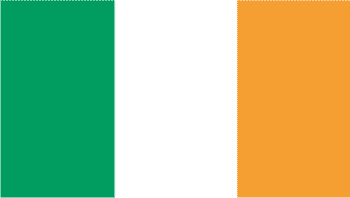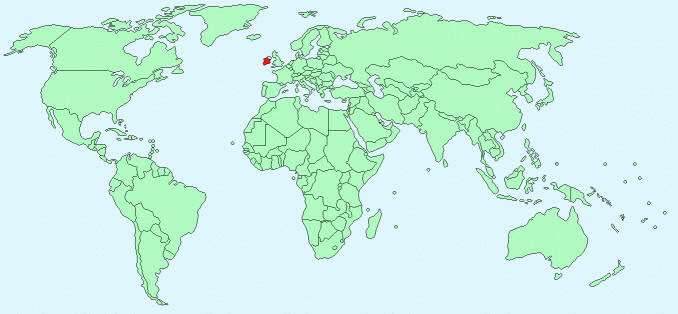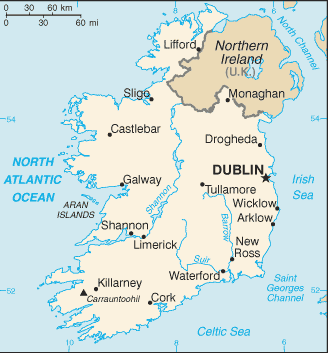Ireland


Continent – Europe
Region – Western Europe
Size – 70,273 km²
Geography – mostly flat plains, western hills, mountains and cliffs
Language – English, Irish (Gaelic)
Religion – Roman Catholic 87.4%, Church of Ireland 2.9%, Other Christian 1.9%, other beliefs 3.6%, none 4.2%
Monetary Unit – Euro
Natural Resources – natural gas, peat, copper, lead, zinc, silver, barite, gypsum, limestone, dolomite
Agriculture – beef, dairy products, barley, potatoes, wheat
Industry – pharmaceuticals, chemicals, computer hardware and software, food products, beverages and brewing

Neighbouring Countries – Northern Ireland (UK)
Population – 4,832,765 (2014 estimate)
Population Growth Rate – 1.2%
Average Life Expectancy – 80.56
Capital City – Dublin (1,804,156)
Highest Mountain – Carrauntoohil (1,041m)
Longest River – Shannon (386 km)
Climate – Temperate, mild winters 0°C to 9°C, cool summers 10°C to 19°C,
Yearly Rainfall – 73 cm (approx)
Plant Life – oak, ash, wych elm, birch, and yew trees, grasses, gorse
Animal Life – hedgehog, red fox, badger, Irish hare, red deer, pine marten, horse, dog, cows, rat
Bird Life – swans, geese, waders, duck, tern, gulls
Fish Life – trout, pike, salmon, pollen
Harvard Reference for this page:
Heather Y Wheeler. (2015). Ireland. Available: https://www.naturalhistoryonthenet.com/Facts_Figures/Country_Facts/ireland.htm. Last accessed Mo
Facts and Figures Pages
